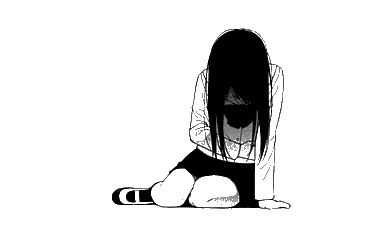KYOUGOKU NATSUHIKO: KOUSETSU HYAKU MONOGATARI
STATUS
COMPLETE
EPISODES
13
RELEASE
December 27, 2003
LENGTH
24 min
DESCRIPTION
Tired of writing riddles for children, Yamaoka Momosuke plans on gathering spooky and gruesome stories and publishing them in an anthology called Hyakumonogatari ("One Hundred Tales"). While researching these old myths and legends he comes across a mysterious trio who call themselves the Ongyou. They are detectives who are investigating the legends to reveal their truths...and bring those in the wrong to justice. Each time Momosuke meets the Ongyou he must face horrible truths and battle with his morals, but he's seeing things he shouldn't be seeing...
(Source: Anime News Network)
CAST

Ogin

Sanae Kobayashi

Mataichi

Ryuusei Nakao

Momosuke Yamaoka

Toshihiko Seki

Nagamimi

Norio Wakamoto

Kyougokutei

Natsuhiko Kyougoku

Jihei

Takeshi Aono

Chio

Noriko Shitaya
EPISODES
Dubbed

Not available on crunchyroll
RELATED TO KYOUGOKU NATSUHIKO: KOUSETSU HYAKU MONOGATARI
REVIEWS

bmoore07
70/100Requiem from the Darkness is the king of standalone storiesContinue on AniListThere is no method to the madness. Within Natsuhiko Kyogoku’s Requiem from the Darkness, there are exceptions to be sure but, generally speaking, this is a show where atrocities are committed by people with zero regard for or reasoning behind their actions. Lacking even a passing resemblance of foresight, they’re easily swayed by their self-serving impulses - a bruised ego here, a childish grievance there - into venturing as far as to kill one another.
“Kill”, of course, is a massive understatement. The humans depicted here don’t simply murder each other; they do so in a variety of grotesque ways. Victims’ faces are contorted with agony and heartrending screams are emitted as their eyes are punctured, their limbs severed, their bodies impaled, their flesh scorched, their skulls shattered, and their bones devoured.
There are countless shows with content that’s similar to Requiem but they deviate from the latter in terms of intent. With other shows, the carnage not only comes across as excessive but also wholly unnecessary; it’s violence for the sake of violence. With Requiem, however, a difference is established. The focus isn’t directed towards mindless bloodshed. Rather, the killings that occur here serve as testimonies to the cruelty within human nature; they depict the extents to just how abominable we act towards one another.
To the Ongyou, exorcists of extraterrestrial origin, these displays of depravity have become depressingly repetitive. Viewing the murders from afar, the Ongyou can’t resist sympathizing with a species that stray from their better judgment time after time. Seeking to steer humanity in a more positive direction (and, at the very least, minimize the amount of destruction we cause), the Ongyou wander throughout the natural world, using their abilities where they see fit.
Based on an award-winning collection of short stories, situated within Japan’s Edo period, Requiem from the Darkness is a show that expresses its brutally frank social commentary via various interactions the Ongyou have with other people throughout their journey. At the series’ start, though, they’re more or less on their own. Led by Mataichi (an undersized spiritualist defined by his threadbare cloak and cynical musings), the Ongyou have maintained success in their exploits but circumstances change when they encounter Momosuke.
He is Requiem’s primary narrator. He is also a hopeless idealist whose naivety, clumsiness and cowardice have endangered the Ongyou’s objective on numerous occasions. However, Momosuke compensates for this through an expertise in folklore and superstitions. His knowledge is put to good use through the myriad of cases the Ongyou tackle; it’s fascinating to see just how crucial a role Japanese mythology plays in situations involving cannibalism, incestuous rape, matricide, and other grisly crimes.
This intersection between the human world and the supernatural is an area Requiem pays close attention to. In particular, it’s concerned with how denizens of the latter perceive the former.
When it comes to presenting our surroundings from the Ongyou’s viewpoint, this show spares no expense. The koto and kotsuzumi provide an era-appropriate musical identity to the proceedings (alongside an amalgam of xylophones, bagpipes, orchestral strings, and chantings) as Requiem showcases its visual mastery. Shadows impose on everything in their sight, often enveloping the characters within its foggy folds, perfectly complementing this show’s dour tone. Buildings insult conventions, twisting and turning, unlike ordinary architecture which mostly stands in place.
These and more contribute to an aesthetic that celebrates creativity more than anything else. Whatever shortcomings appear along the way (from poorly integrated CGI to inconsistent character design) are almost entirely negated by a show that overwhelms with its endless forays into the visually experimental. Naturally, this artistic pursuit culminates with what’s easily the most haunting sequence in the entire series.
/
A little girl, known as “Tai”, calmly approaches an elderly man undergoing a mental breakdown. Clutching a ragdoll in her arms, Tai converses with this man, her voice cheerful, her eyes radiant with mischief. The exchange then screeches to a halt. Tai exhibits a toothy grin and releases a mocking snicker before she mutates.
Luminous purple shadows glimmer on Tai’s countenance and in the pitch-black background behind her as her facial features dissolve into nothingness. What once appeared to be a little girl is now reduced to a corpse, a display of broken bones and frayed hair. Tai, however, is unfazed. Ignoring the rivulets of blood that flow from the corners of her mouth (alongside the other changes), she leans closer to the elderly man and continues the conversation, maintaining her cheerful tone.
Tai is not real. She’s a replica of an innocent soul. She’s an illusion, conjured by the Ongyou to assist in completing one of their cases. She’s a walking reminder for the elderly man of the life he robbed. On a surface level, Tai’s metamorphosis, observed from the man’s point-of-view, is both aesthetically pleasing and weirdly mesmerizing. On further examination, the sequence is an intimidation tactic the Ongyou employed to persuade the man into acknowledging his mistakes. Watching Tai transform and listening to her explain what the man did (“You cut me in half”) is enough to trigger his repressed memories and bring him a step closer to redemption.
The experience also forces him to consider why he killed Tai (and his other victims) in the first place. Were his upbringing and social influences responsible for turning him into a murderer or was his behavior ingrained in him from the start?
/
Nature vs nurture. This debate serves as Requiem’s overarching theme. The killings, the Ongyou’s mission, the social commentary, and the aesthetic flourishes all ultimately relate to the topic at hand. Yes, this series is, at its core, an examination of humanity at its worst but it’s also interested in determining the impetus for our actions. Although Requiem eventually aligns itself with “nature”, the argument it establishes is one that even the opposition might consider.
This show maintains that our natural traits are the biggest inspiration behind our behavior but it doesn’t believe that we are to be forever defined by them. The capacity for evil, to present a specific example, is something Requiem deems an inherent characteristic but this show claims that it’s hardly permanent. Again and again, the people that recognize their inherent evil and consciously seek to improve themselves are the ones who overcome their natural traits. Granted, there are plenty who don’t but that doesn’t prevent Requiem from believing even the worst of us are capable of change.
Of course, the road to redemption isn’t easy, not when there are supernatural creatures hindering your progress.
Natsuhiko Kyogoku is an award-winning novelist and an admirer of the late mangaka Shigeru Mizuki but he’s also a self-proclaimed “yokai researcher” that’s convinced yokai folklore is a form of sublimation. This idea of his is apparent in almost all of Kyogoku’s works, except for Requiem from the Darkness.
With his other projects, he always ensured that the yokai were to never appear. The focus was to remain on the human characters. Yokai and the supernatural myths involving them were only permitted to exist as fables, paralleling a criminal’s motives and behavior. Requiem, on the other hand, is far more liberal in handling yokai. Although this wasn’t much of an issue at the series’ start, the situation becomes more and more difficult to ignore later on.
When the Ongyou decided to embark on their string of investigations and exorcisms throughout our world, they quickly discovered other supernatural entities that arrived long before them. These are what’s referred to as “yokai”. At first, the ones that the Ongyou encountered were of a simple variety, weird but ultimately harmless creatures with amusing voices and mannerisms. These yokai were loosely involved in Requiem, appearing on a semi-frequent basis, never detracting from the show’s purpose and direction.
This wouldn't always be the case. As Requiem’s story develops, the yokai not only become a consistent presence within the show but they also start actively interfering with major events. No longer are they charming oddities. The yokai are now vicious and deadly terrors of the night, legitimate threats that the Ongyou have to contend with in order to complete their mission. This decision is flawed on two fronts. First, having this show revolve around the Ongyou’s various showdowns with the yokai completely derails from the themes it’s been building upon since the beginning. Second, leading these various showdowns towards a final battle is the polar opposite of what makes Requiem special.
This show thrives in tight spaces. Requiem’s strength lies within the relatability of its individual dramas, within the isolated yet intimate cases the Ongyou tackle, within the nuanced perspective it lends towards its small-scale events. It is the king of standalone stories.
A shame, then, that Requiem’s last four episodes fail to understand this. I’ll admit, though, that the intention behind them (grappling with the demons of your past) was pretty solid (even if it has zero relation to the show’s overall theme) but whatever direction these episodes were driven towards is overshadowed by its halfhearted foray into religious commentary, by its lackluster subplot involving water zombies (what were they thinking with that one?) and by its excessively theatrical main antagonist (“The world as it is now is an illusion!” he bellows, “Within the darkness, there is truth!”).
While I will always struggle to understand the reasoning behind those last four episodes, there’s no point in holding that against a series that has earned my respect, admiration and undying loyalty multiple times over. In a genre mainly known for cheap jump scares and abysmal acting, Requiem from the Darkness distinguishes itself through its thoroughly researched insight into human nature. For me, watching this show analyze the way we think is both a privilege and an honor.
SIMILAR ANIMES YOU MAY LIKE
 ANIME MysteryMouryou no Hako
ANIME MysteryMouryou no Hako ANIME DramaJigoku Shoujo
ANIME DramaJigoku Shoujo ANIME ComedyBakemonogatari
ANIME ComedyBakemonogatari ANIME ComedyGhost Hunt
ANIME ComedyGhost Hunt OVA ActionJoJo no Kimyou na Bouken
OVA ActionJoJo no Kimyou na Bouken
SCORE
- (3.3/5)
MORE INFO
Ended inDecember 27, 2003
Main Studio TMS Entertainment
Favorited by 87 Users









